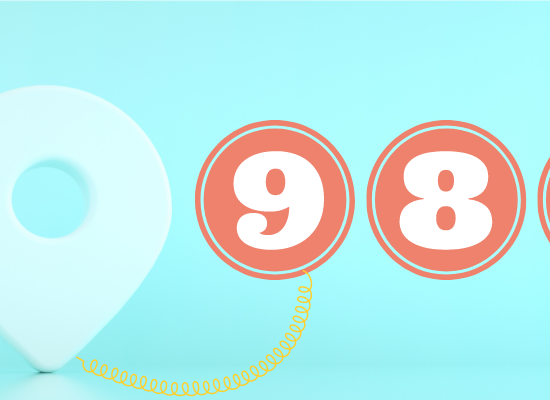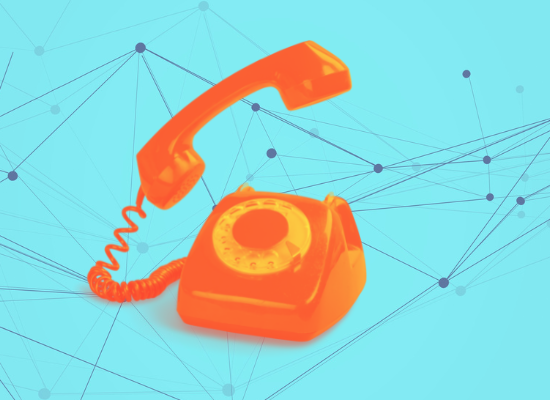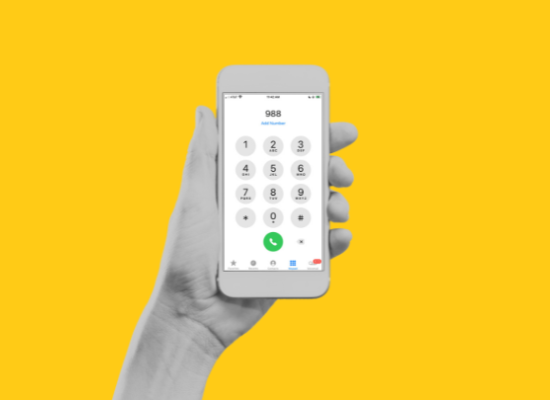
Stephanie Hepburn is a writer in New Orleans. She is the editor in chief of #CrisisTalk. You can reach her at .
Emergency medical services in the United States have been shaped by the pioneering 1960s-‘70s Freedom House, a professional Black-run ambulance service that replaced law enforcement and funeral homes in the role of emergency transport, many of whom refused to go into Black neighborhoods, and helped establish the national standards for emergency medical care used today. Freedom House Enterprises, which partnered with the NAACP, was a fledgling non-profit that wanted to create Black-owned businesses. The corporation began its ambulance service to bring better healthcare and jobs into predominantly Black neighborhoods in a profoundly racially segregated Pittsburgh.
Freedom House’s grant-funded ambulance service began by covering the Hill District and eventually expanded to include Downtown and Oakland in its service area. Physicians Nancy Caroline, a critical care doctor who became known as “the Mother of Paramedics,” and Peter Safar, the Austrian anesthesiologist who developed CPR, were among the experts who worked with Freedom House to train un- and underemployed Black men and women to provide emergency medical response to people in need within their community.
John Moon, one of Freedom House’s paramedics who later became Pittsburgh’s Assistant EMS Chief, told The Atavist Magazine that the team practiced intubation on dead dogs and mannequins, perfecting the life-saving technique so they could use it in the field, which was unheard of at the time. The service tweaked its dispatch radio to pick up police frequency so they wouldn’t miss a medical emergency, and their ambulances quickly became mobile intensive-care units. “We did something no one thought we could,” Moon told the publication. “To have jumped those barriers, proved everyone wrong? Nobody could take away what we did or the pride we had.” He went on to say that generations of paramedics have continued what Freedom House started.
More than a half-century later, psychiatrist Eric Rafla-Yuan says states can learn from the Freedom House EMT model as they prepare for 988 by creating a new mobile crisis team role: dubbed by some as a behavioral health first responder or psych-EMT. In May, he and his co-authors explored the historic ambulance service in an article published in the New England Journal of Medicine.
“Freedom House developed an important model: clinical specialists trained to provide emergency medical care on-site. These advances led to paramedics and EMTs as we know them today, as well as the emergency medicine specialty,” he says. “On the mental health side, we have done nothing like that yet. With 988, the need to do so is greater than ever.”
Creating a behavioral health first responder role, notes Rafla-Yuan, serves two vital purposes. First, it would provide a pathway for professional employment, which would be open to many more people, especially those who have been structurally disadvantaged, improving racial and ethnic concordance. “We need a profession designed equitably, making it more likely that people come from the communities they serve.” Secondly, it would grow a workforce to address the spike in demand that will likely result from 988. Telecom companies must make the three-digit number for mental health, substance use, and suicide crises live by July 16, 2022. T-Mobile made 988 available to its customers nationwide on November 20, and AT&T did so on July 1 for 99% of its wireless customers.
Even for the era, emergency response in ‘60s-‘70s Pittsburgh was behind the times. The idea that services could go directly to people in medical distress instead of the reverse was unheard of. Funeral homes transported people to hospitals in private ambulances, but they often refused to go to predominantly Black neighborhoods. Instead, police were the default emergency response, taking people in medical crisis to the hospital, though, sometimes, they too refused to go into the Hill District.
When law enforcement did arrive, they’d put the person in the back of a police van and rush them off to the hospital. “The officers didn’t have the life-saving medical training or equipment to do the job,” says Dr. Rafla-Yuan, “and no one was in the back with the person to help them if they stopped breathing.” On top of it, ‘60s-’70s Pittsburgh was plagued by rampant racism and systemic inequalities, so people in the Hill District were understandably wary of calling the police, even if experiencing a medical emergency. A hesitation that continues today, nationwide, points out Dr. Rafla-Yuan.
Black people have continued to be disproportionately at increased risk of death during a police interaction. According to the Washington Post’s police shooting database, in the past year, 24% of people killed by police were Black. Also at escalated risk of death during a police interaction are people experiencing a mental health crisis. The same database shows that 23% of people killed by police were identified as having a mental illness.
Dr. Rochelle Head-Dunham told #CrisisTalk in October that the Covid pandemic has made racial disparities impossible to deny. She described racism in America as a kettle percolating, with heat from the pandemic and lethal police interactions for Black people blowing the top off, shining a much-needed lens on why racial and ethnic concordance is dire.
The idea that those best positioned to serve a community are those within it isn’t novel. However, there is insufficient representation of people of color in mental health professions. For example, in 2015, four percent of psychologists in the U.S. workforce were Black, five percent were Hispanic, and 5 percent were Asian. As Victor Armstrong told us in December, “During a behavioral health crisis, people of color are going to a psychiatric or medical emergency department where the people treating them likely don’t look like them.” Armstrong is the director of the North Carolina Division for Mental Health, Developmental Disabilities, and Substance Abuse Services.
The behavioral health field is already experiencing workforce scarcity, which the Health Resources and Services Administration Bureau of Health Workforce projects will continue. With 988 on the horizon, there’s increased pressure for states to not only fill in labor gaps, says Dr. Rafla-Yuan, but far surpass them. While state leaders have been discussing how they can quickly boost their workforce in preparation for 988, Dr. Rafla-Yuan hopes they do so with a focus on equity, diversity, and cultural competency.
Thought leaders like Armstrong and Dr. Anitra Warrior have discussed how to address workforce shortages immediately and long term and in an inclusive way. For example, Dr. Warrior holds camps on the Winnebago reservation in Nebraska, where American Indian high school juniors and seniors learn about psychology and culture and earn three college credits. The idea, she told #CrisisTalk, is to “plant the seeds, so those from the community are serving the community.”
Peers, Armstrong told us, are an underutilized workforce that can receive certification far faster than other behavioral health workers, providing a means to increase the workforce and improve diversity in the field. “In North Carolina, we have almost 4,000 certified peer support specialists, with roughly 1,500 who are currently unemployed,” said Armstrong. “There is a ready workforce of peers available.”
State Sen. Daniel Thatcher and his colleagues in the Utah legislature, concerned about how to increase their in-person response to mental health emergencies, passed a new law that would create licenses for behavioral health equivalents to an EMT, called “behavioral emergency services technicians” and “advanced behavioral emergency services technicians.” In April, he told us that, out of 1,000 calls to the Utah CrisisLine—the National Suicide Prevention Lifeline accredited call center at the University of Utah—roughly 100 need an in-person dispatch. The technician would triage people experiencing behavioral health emergencies and connect them to services. Sen. Thatcher, who sponsored the bill, told us that 988 and 911 could dispatch mental health EMS teams.
Similarly, Dr. Rafla-Yuan says behavioral health first responder certification training for mobile crisis teams would preferably be about the same duration as that for EMTs, perhaps around 6-12 months, with a curriculum focused on recognizing, triaging, and treating acute mental health symptoms. Like EMTs, he notes these emergency responders should have around-the-clock backup by higher-level clinicians. In San Diego, where Dr. Rafla-Yuan works, if someone wants to be part of a mobile crisis team, they’d need to be a clinician with a master’s degree. “That’s a six-year investment,” he says, “which is a high barrier to entry.” “Furthermore, most mental health professional programs are typically designed for longitudinal outpatient care, not mobile crisis settings.”
The closest environment to that of mobile crisis would be the emergency department. “But, unlike mobile crisis teams, in the ED, you still have immediate access to backup and supplies, a luxury you don’t have on the street or in someone’s home,” says Dr. Rafla-Yuan. “It’s time to create a profession designed specifically for the mobile crisis setting.”
The Freedom House model fostered equity, demonstrating that training people in the community increases access to quality care and promotes rapid workforce growth. It also created a new profession with a much-needed skillset. Hill District residents who received emergency medical training and participated in the Freedom House ambulance service became the national model for EMTs still used today. “They were the best of the best,” says Dr. Rafla-Yuan.
“If we’re spending millions of dollars across the country on mobile crisis teams, we should also look at the ways we can do it better, which includes addressing equitable application and workforce numbers. In addition, we must determine the best skillsets for the roles on the new teams we’re creating, expanding upon the professions we already have in place.”












